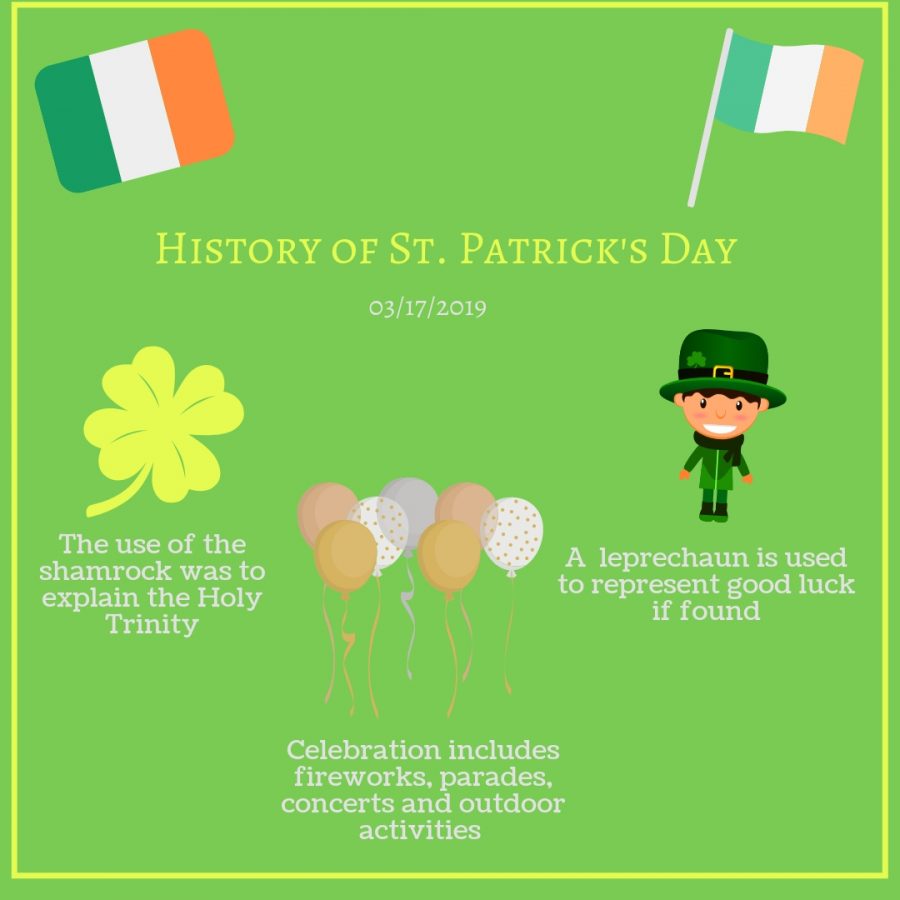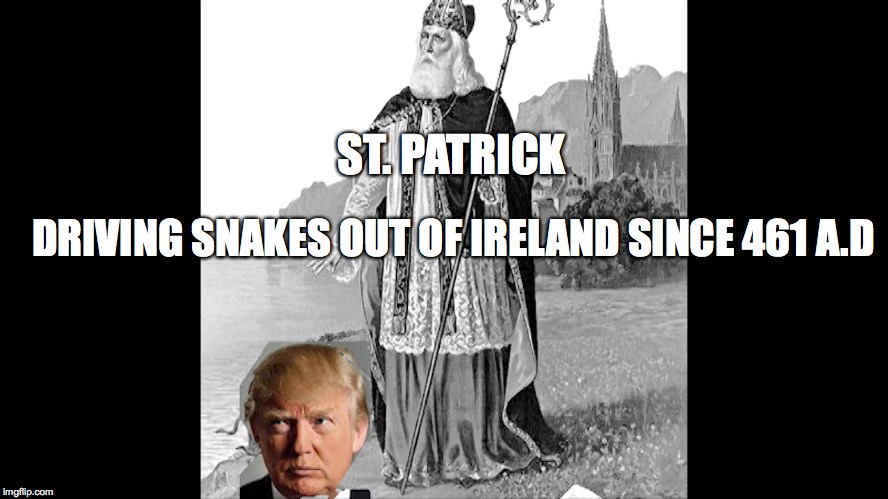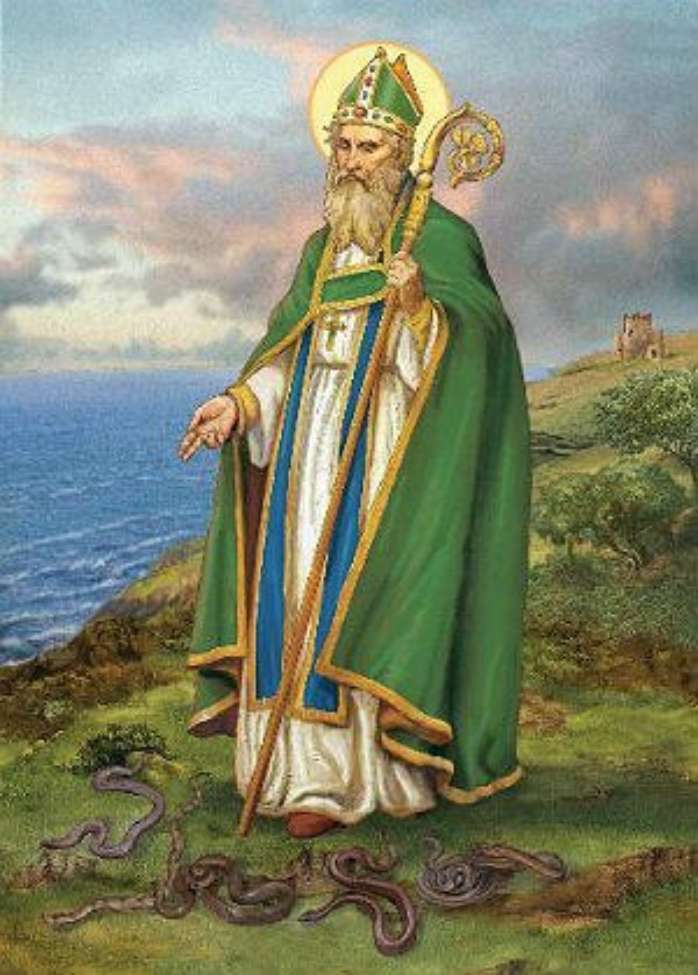Gallery
Photos from events, contest for the best costume, videos from master classes.
 |  |
 |  |
 |  |
 |  |
 |  |
 |  |
The first St. Patrick's Day Parade actually took place in Boston, Massachusetts, back in 1737; the city is known for its high percentage of residents who claim an Irish ancestry. However, some modern Pagans refuse to observe a day which honors the elimination of an old religion in favor of a new one. While St. Patrick’s Day evolved into an unofficial holiday to revel in all things Irish, Evacuation Day became a legal civic holiday in Boston starting in 1901, giving the city two reasons to This act, equivalent to canonization at the time, affirmed St. Patrick’s status as a saint within the Church. Thus, just as the myths of St. Patrick’s nationality and snake-banishing endure, so too does this modern revisionism—one that ignores the history of Ireland’s patron saint for sensationalism. You have probably heard the story that St Patrick, the Patron Saint of Ireland rid the Emerald Isle of snakes. But is this actually true and what is the relationship between snakes and the island of Ireland. Click through our gallery above to find out. The Best Irish Songs And The Best Irish Films Of All Time For Paddy’s Day; 8 Ways That We Celebrate St. Patrick’s Day In Ireland; The Most Notable St. Patrick’s Day Traditions In Ireland; 17 Tasty St. Patrick’s Day Cocktails To Whip Up At Home; How To Say Happy St. Patrick’s Day In Irish; 5 St. Patrick’s Day Prayers And Blessings The Great Serpent Myth: Did St. Patrick Really Banish Snakes from Ireland? The short answer? No, St. Patrick did not drive snakes out of Ireland. While the legend is deeply ingrained in Irish folklore and celebrated every St. Patrick’s Day, scientific evidence and historical context tell a different story. The snake has always represented transformation, healing, and rebirth—even in ancient Irish myth. To drive out the snake was to drive out fear, superstition, and tribalism—and replace it with a faith built on unity, renewal, and grace. St. Patrick’s myth is not about biology—it’s about symbolism that outlasts bone and skin. St. Patrick’s Day is a global celebration of Irish culture that takes place annually on March 17, the anniversary of the patron saint of Ireland's death in the fifth century. The holiday has Though St. Patrick’s Day was officially placed on the Christian calendar in the early 1600s, the Irish people had been paying homage to their beloved saint in more localised and informal ways for hundreds of years. New York City and the First St. Patrick’s Day Parade One of the earliest St. Patrick’s Day celebrations in America took place in Boston in 1737, when a group of Irish Protestants gathered to How St. Patrick’s Day Began After his death on March 17th, 461 AD , Patrick became Ireland’s patron saint , and his legacy lived on. Over time, people honoured him with feasts and celebrations , and what started as a religious holiday eventually became the global celebration of Irish culture we know today! St. Patrick’s Day, celebrated on March 17 each year, is known for its parades, shamrocks, and a whole lot of green. It’s a day when people around the world embrace Irish culture — whether they have Irish heritage or not. But behind all the revelry, St. Patrick’s Day has a deep and fascinating history that goes far beyond the modern celebrations. Some of the traditions we associate with It’s a story that has been passed down through generations, becoming an integral part of Irish identity and celebrated annually on St. Patrick’s Day. Frequently Asked Questions (FAQs) About St. Patrick and the Snakes 1. Was St. Patrick Irish? Actually, no. St. Patrick was born in Roman Britain, likely in Scotland. March 17th, St. Patrick’s Day, a festival often associated with parades, shamrocks, and the colour green. In Ireland, the day is a national holiday, commemorating the patron saint who is said to have brought Christianity to the island. But beneath the layers of modern festivity lies a deeper and older story — one that speaks the staff of the Ridgewood blog. Ridgewood NJ, every March 17, the world turns a little greener in celebration of St. Patrick’s Day.From leprechauns and shamrocks to parades and pints of Guinness, the holiday is packed with traditions—some deeply rooted in Irish history and others purely American inventions. Originally a religious holiday, St. Patrick’s Day was more about quiet reflection than wild celebrations. But Irish immigrants, particularly in the United States, transformed it into a huge cultural event. The first St. Patrick’s Day parade wasn’t even in Ireland—it was in Boston in 1737! For St. Patrick’s Day 2013, the New York Times reported on the phenomenon and talked to Kevin Cunningham, founder of the National Exotic Animal Sanctuary, which took in many abandoned snakes. When most people think of St. Patrick’s Day, images of green-clad revelers, shamrocks, and overflowing pints come to mind. But behind the festive parades and the leprechaun lore lies a complex, ancient tapestry of pagan traditions, mystical symbols, and a clash of spiritual worlds. St. Patrick’s Day isn’t just a celebr St. Patrick’s Day is widely celebrated for its Irish heritage, but beneath the parades and green beer lies a history that isn’t as festive—especially for witches and pagans. One of the most well-known legends about St. Patrick is that he “drove the snakes out of Ireland.” However, Ireland has never had native snake pop Maybe St. Patrick’s story isn’t about removing literal snakes, but about choosing to leave behind what doesn’t belong in our lives anymore. So, as you throw on your best green outfit and celebrate St. Patrick’s Day this year, take a moment to think beyond the surface-level myths.
Articles and news, personal stories, interviews with experts.
Photos from events, contest for the best costume, videos from master classes.
 |  |
 |  |
 |  |
 |  |
 |  |
 |  |